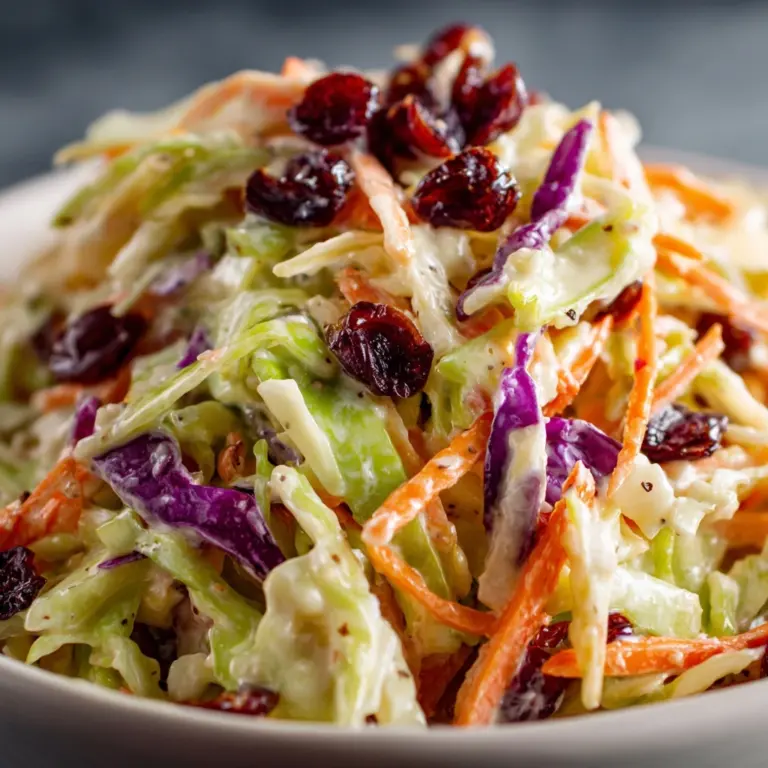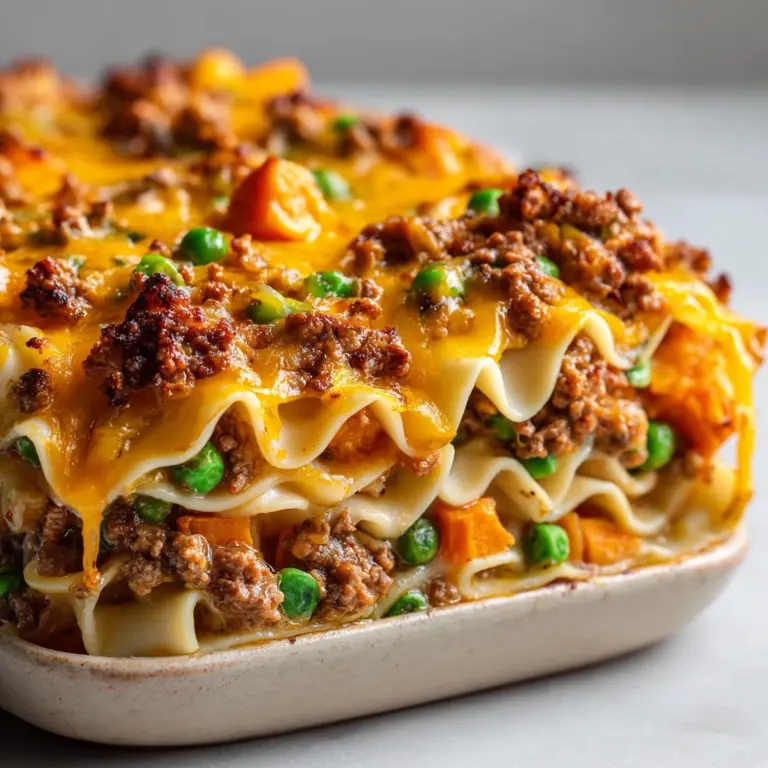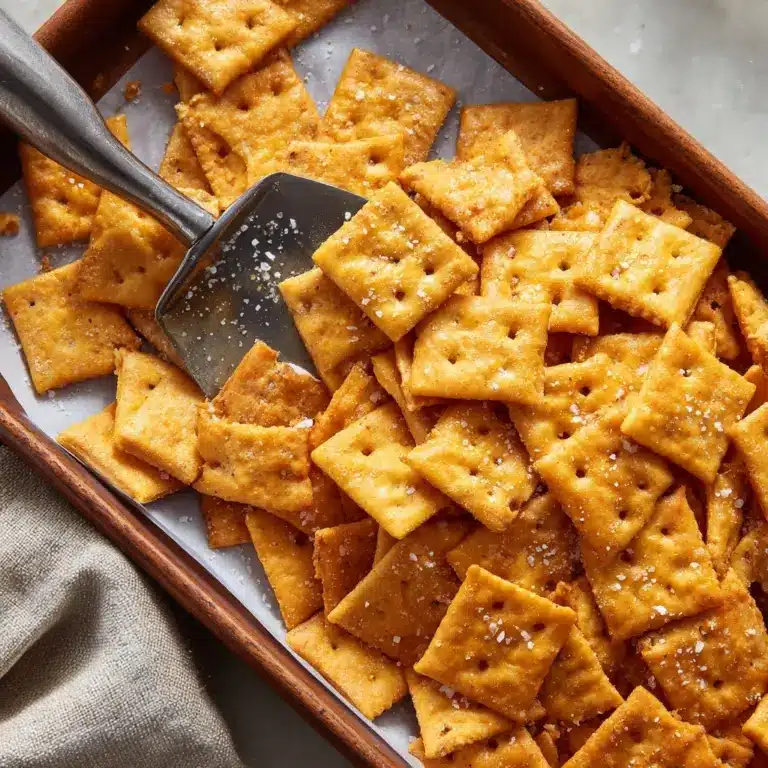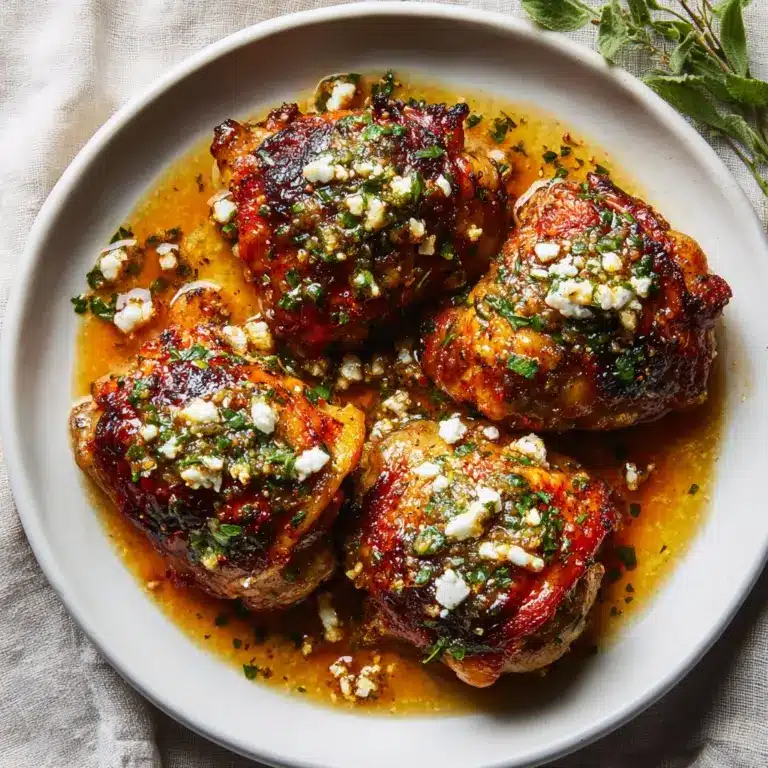Easter Bread Recipe
If you’re looking to fill your kitchen with the most irresistible aroma this spring, this Easter Bread recipe is pure magic. With its pillowy-soft texture, golden braided crust, and playful sprinkles, Easter Bread is that nostalgic, show-stopping treat that makes every holiday breakfast or brunch table look extra special. Whether you enjoy it fresh from the oven with a swipe of butter or all dressed up with colored eggs, this bread is as much a celebration of tradition as it is a feast for your senses. Get ready for a baking adventure that brings color and joy to your holiday season!
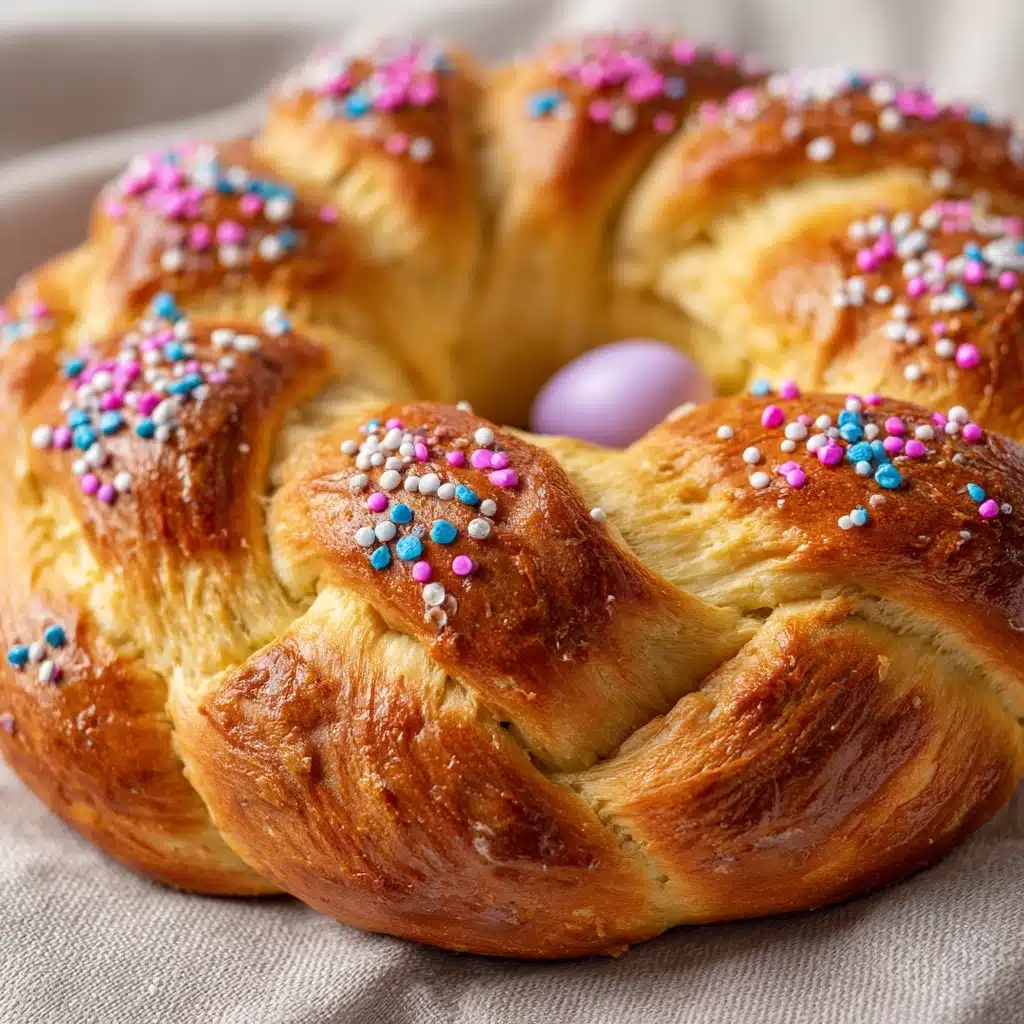
Ingredients You’ll Need
Classic Easter Bread is all about a handful of simple, high-quality ingredients working together for one incredibly tender, lightly sweet loaf. Each ingredient brings its own unique character, from richness and fluffiness to that signature festive color.
- All-purpose flour: The backbone of your bread, giving structure and chewiness to every slice.
- Granulated sugar: Adds delicate sweetness and helps create a golden, tender crust.
- Active dry yeast: Your ticket to pillowy, airy texture and those signature risen braids.
- Salt: Enhances all the flavors and balances out the sweetness.
- Whole milk (warmed): Contributes exceptional moisture, richness, and a soft crumb.
- Unsalted butter (melted): Lends richness and tenderizes the dough beautifully.
- Large eggs (plus extra for egg wash): Essential for structure, a golden color, and luxurious texture.
- Vanilla extract: Adds a warm, inviting aroma that fills the whole kitchen.
- Almond extract (optional): Gives a subtle nutty undertone that’s classic in many Easter Bread recipes.
- Colored sprinkles (optional): For a festive, joyful touch that makes the loaf pop visually.
- Dyed uncooked Easter eggs (optional for decoration): Nestled into the braid before baking for a truly traditional celebration loaf.
How to Make Easter Bread
Step 1: Combine Dry Ingredients
Start in a large mixing bowl by whisking together one cup of flour, granulated sugar, active dry yeast, and salt. This gives your Easter Bread a good base for rising and mixing, evenly distributing both flavor and the yeast that’ll make your bread anything but flat.
Step 2: Mix the Wet Ingredients
In a separate bowl, whisk together the warm whole milk, melted butter, three eggs, vanilla, and almond extract (if you’re using it). Whisk until everything is silky and combined—these wet ingredients bring richness, tenderness, and that fragrant depth every good Easter Bread needs.
Step 3: Bring It All Together
Pour your wet mixture over the dry ingredients and stir until they’re mostly incorporated. Slowly add the remaining flour, mixing as you go, until you see a soft, slightly sticky dough begin to form. Don’t rush—this step determines how light and fluffy your bread will be!
Step 4: Knead the Dough
Turn the dough out onto a floured surface. Knead for 8 to 10 minutes until it feels smooth, springy, and elastic. This is your moment to channel all your love into the loaf—kneading develops the gluten, resulting in that lovely braided texture Easter Bread is famous for.
Step 5: First Rise
Place your dough in a greased bowl, cover it with a clean towel, and set it somewhere warm. Let it rise for about 1 to 1.5 hours, or until it doubles in size. Watching that puffy growth is such a satisfying step, and it’s worth every second of patience.
Step 6: Shape, Braid, and Second Rise
Punch down the dough to deflate it gently. Divide it into 2 or 3 ropes, then braid them together and curve into a circle or wreath on your parchment-lined baking sheet. Gently tuck in your dyed uncooked Easter eggs if you’re using them—no need to worry, they’ll bake perfectly right in the braid. Cover and let rise for another 30 to 45 minutes.
Step 7: Egg Wash and Decoration
Time for that signature golden finish! Lightly beat one egg with a splash of water and brush it over the risen braid. If you love a festive look, now’s the time to shower your Easter Bread with colorful sprinkles for that playful holiday touch.
Step 8: Bake and Cool
Slide your tray into a preheated 350°F oven and bake for 25 to 30 minutes or until the loaf is beautifully golden and sounds hollow when tapped. Let it cool before slicing—you want the crumb to set and those colors to shine!
How to Serve Easter Bread
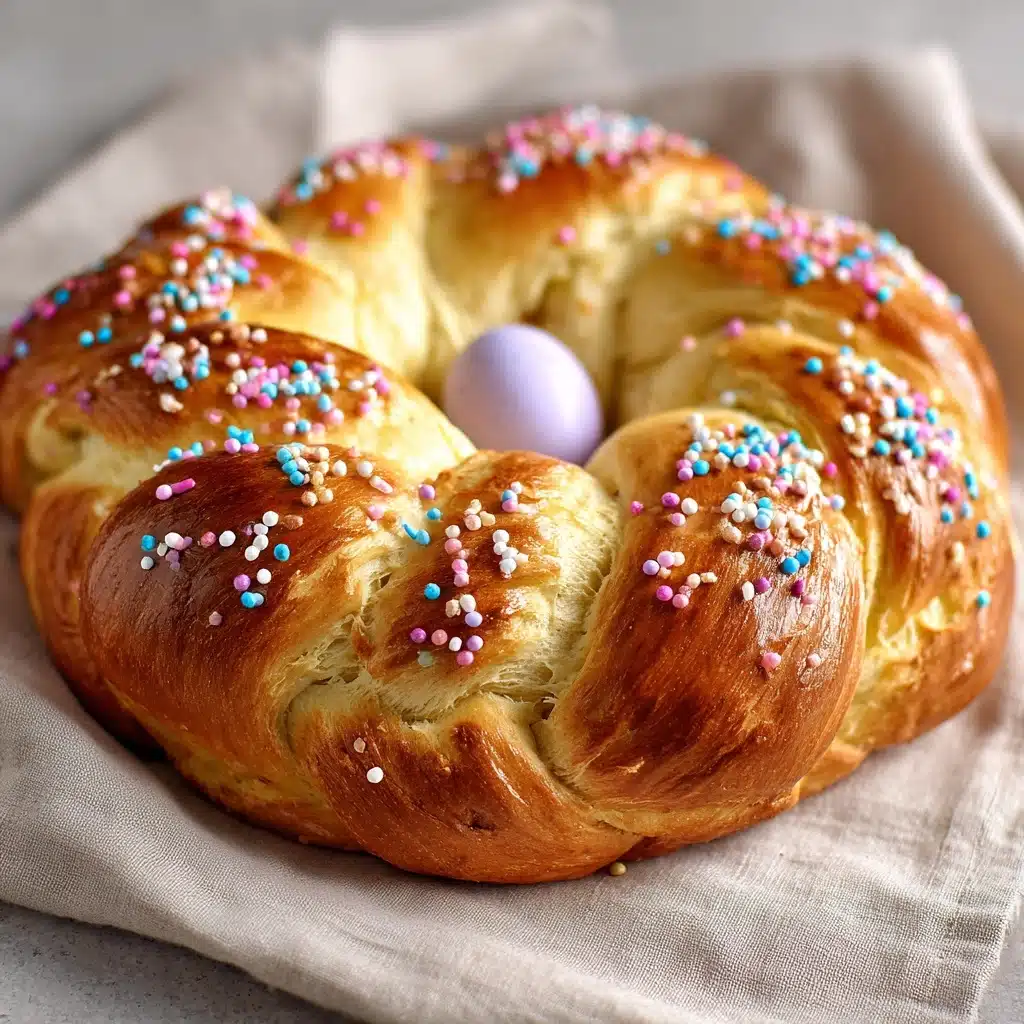
Garnishes
Easter Bread is simply stunning on its own, but you can add a light dusting of powdered sugar after it cools for an extra hint of sweetness and beautiful finish. If you’ve used dyed eggs and sprinkles, let the bread speak for itself—every slice is a celebration!
Side Dishes
This bread pairs perfectly with a slather of creamy butter, a dollop of ricotta cheese, or tangy fruit preserves. For a spring brunch spread, serve it alongside fresh fruit, scrambled eggs, or even a platter of smoked salmon and greens to create a feast that caters to every craving.
Creative Ways to Present
Make your Easter Bread the star centerpiece by serving it as a wreath filled with colored eggs and fresh blooms right in the middle of the table. For a personal touch, you can shape individual braided mini-loaves—each with its own tiny egg tucked inside—so every guest gets their own delightful portion.
Make Ahead and Storage
Storing Leftovers
To keep your Easter Bread at its best, wrap leftovers tightly in plastic wrap or place in an airtight container at room temperature. It stays soft and fresh for up to three days, making it perfect for leisurely holiday breakfasts all weekend long.
Freezing
If you want to save your Easter Bread for later, let it cool completely, wrap it snugly in plastic wrap and then in foil, and freeze for up to two months. Thaw overnight at room temperature for a bread revival that’s just as delicious as when fresh.
Reheating
Warm individual slices in a toaster or oven at 300°F for a few minutes to bring back that soft, just-baked feel. If you love a richer bite, toast a slice and spread it with butter for a melt-in-your-mouth experience.
FAQs
Can I make Easter Bread without the colored eggs?
Absolutely! While the colorful eggs are traditional and beautiful, this bread stands strong on its own. Skip the eggs if preferred, or use natural food coloring for a more subtle look.
Why does my dough seem too sticky or dry?
Bread dough can vary based on humidity and flour brand. If it’s too sticky, add a tablespoon of flour at a time while kneading. If it’s dry, drizzle in a little more warm milk, mixing until smooth and elastic.
Can I use instant yeast instead of active dry yeast?
Yes, instant yeast works well—just skip the activation step and add it directly to your dry ingredients. The rising times might be a bit quicker, so keep an eye on your dough.
How do I dye the eggs for decoration?
Use food coloring or natural dye methods on raw, uncooked eggs, then let them dry completely before nestling them into the braid for baking. They’ll cook through right along with your loaf!
Is Easter Bread only for Easter?
Not at all! While it’s most popular during spring celebrations, this sweet, festive bread is perfect any time you want to bring some color, tradition, or joy to your table.
Final Thoughts
Baking Easter Bread is more than just making something delicious—it’s about creating memories and sharing happiness with everyone at your table. Whether you stick to tradition or put your own spin on the presentation, one thing’s for sure: this beautiful bread is meant to be enjoyed, shared, and cherished. Give it a try this season and watch the smiles and compliments roll in!
Print
Easter Bread Recipe
- Total Time: 2 hours 30 minutes (including rise time)
- Yield: 1 large braided loaf (8–10 servings) 1x
- Diet: Vegetarian
Description
This Easter Bread recipe yields a beautifully braided loaf, perfect for your holiday table. Lightly sweet and adorned with colorful eggs, this festive bread is a delightful addition to your Easter celebrations.
Ingredients
Dough:
- 4 cups all-purpose flour
- 1/2 cup granulated sugar
- 1 packet (2 1/4 tsp) active dry yeast
- 1/2 teaspoon salt
Wet Ingredients:
- 2/3 cup whole milk, warmed
- 2 tablespoons unsalted butter, melted
- 3 large eggs (plus 1 for egg wash)
- 1 teaspoon vanilla extract
- 1/2 teaspoon almond extract (optional)
Additional:
- Colored sprinkles (optional)
- 3–4 dyed uncooked Easter eggs (optional for decoration)
Instructions
- Prepare Dough: Combine 1 cup of flour, sugar, yeast, and salt. Mix warm milk, melted butter, eggs, vanilla, and almond extract. Add wet ingredients to dry, then mix in remaining flour. Knead for 8–10 minutes.
- Rise: Let dough rise for 1–1.5 hours until doubled.
- Braid and Decorate: Divide dough, braid into a circle, add eggs if desired. Let rise for 30–45 minutes.
- Bake: Preheat oven to 350°F (175°C). Brush dough with egg wash, sprinkle if desired. Bake for 25–30 minutes.
- Cool and Enjoy: Cool before slicing and serving.
Notes
- The colored eggs bake along with the bread and are edible.
- Best enjoyed fresh or toasted with butter.
- Individual braided nests can be made for mini loaves.
- Prep Time: 25 minutes
- Cook Time: 30 minutes
- Category: Bread
- Method: Baking
- Cuisine: Italian, Greek
Nutrition
- Serving Size: 1 slice
- Calories: 210
- Sugar: 8g
- Sodium: 110mg
- Fat: 6g
- Saturated Fat: 3g
- Unsaturated Fat: 2g
- Trans Fat: 0g
- Carbohydrates: 32g
- Fiber: 1g
- Protein: 6g
- Cholesterol: 55mg

